Bee-Friendly Garden Care
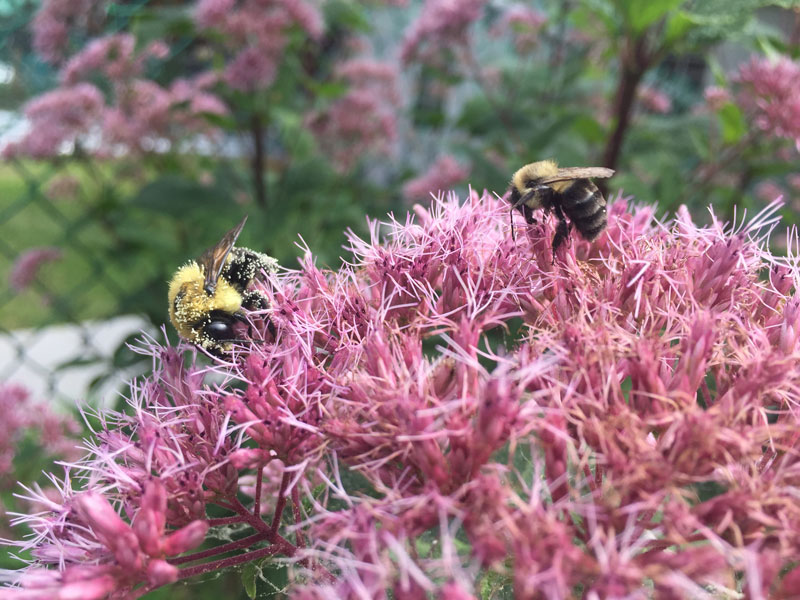
Can our urban perennial gardens provide an opportunity for ecological conservation? We truly believe so! Traditionally, the focus of ornamental gardens has been mainly aesthetic and little thought was given to how the garden functions from an ecological perspective. Our philosophy is that our gardens are part of a larger ecosystem and each member of that system has an important role to play in keeping the whole system healthy. A big part of a healthy system is a robust pollinator population that can be nurtured by urban gardeners who keep some basic but integral maintenance principles in mind.
Let’s dive into how you can maintain your perennial garden in a way that supports native pollinators.
Your First Year
New pollinator gardens can look small when first installed, but these plants will establish better if planted young and will greatly expand in size in their first few years. If planted too close together they could crowd each other and cause issues like pest infestations or stunted growth.
It is important to keep new plantings well-watered during the first year, especially during dry periods. That said, once your native perennials are established in the right location, they will require little to no supplemental water, except through extended dry spells.
It is also a great idea to prevent unwanted plants (weeds) from taking hold. If your site is windy or the soil was disturbed during planting, you can expect weed pressure. The time required to weed will reduce significantly over the years so be sure to pay close attention during the first year in order to give your plants a fighting chance against weedy competition.
Applying a thick layer of quality mulch will help suppress weeds and will also help to reduce evaporation and thus retain moisture in the soil.
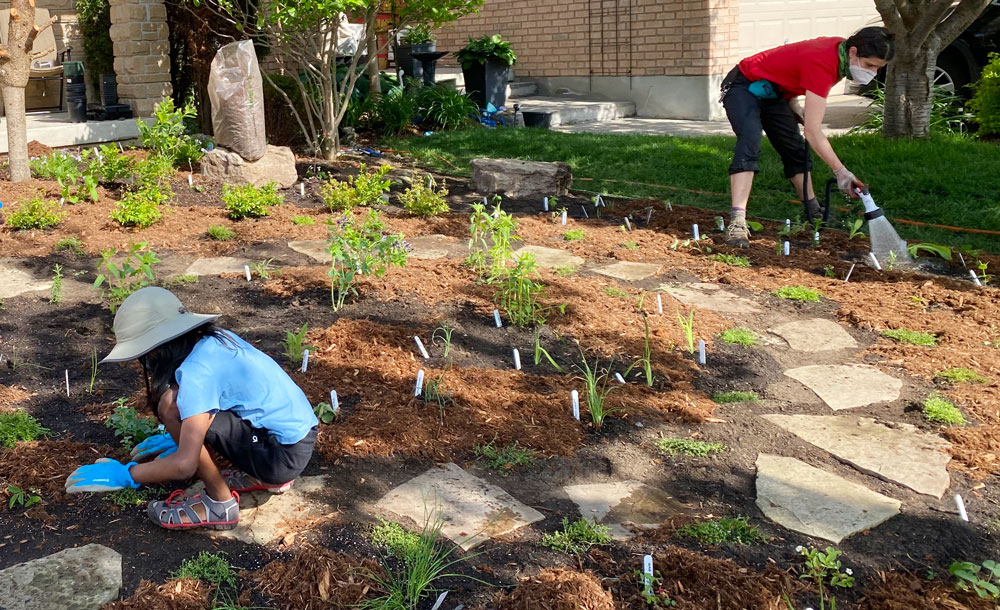
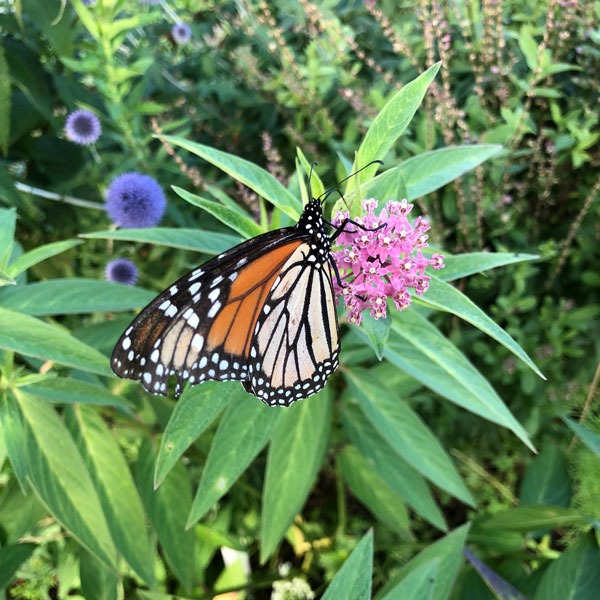
“Weeds”
A weed is just a plant that grows where you don’t want it to be. They are not inherently good or bad. In fact, weeds often make good forage plants for bees. Nectar or pollen-filled plants favoured by bees include Dandelion, Creeping thyme, Bee Balm, Wild geranium, Joe Pye weed, Anise hyssop, Goldenrod, Milkweed, New England Aster, Jewel weed, Common Elderberry, native Thistles (to not be confused with the invasive Canada Thistle), and others. The bees certainly don’t discriminate between weeds and “non-weeds” like we do!
Rather than labeling a plant, a “weed” or even “invasive”, try to discern what ecological function it serves. Does this plant support or out-compete other plants or insects? Does it increase biodiversity? Does it improve soil health? Invasive plants, also referred to as opportunistic, serve to cover bare soil and can often thrive in very harsh conditions. They can say a lot about your soil and can inform how to best maintain it and increase its health over time. Goldenrods are likely to appear on sandy soils, while dandelions can indicate compacted and/or acidic soil.
We prefer to use the term “weed” as a verb, as in “it’s time to weed the garden”, rather than a noun. Deciding whether or not to remove a plant ultimately comes down to observation, experience and ultimately developing your relationship with your garden. The same holds true for trying to grow a plant where it just doesn’t want to grow. Take some time to learn and observe the plants that invite themselves into your space and you will begin to learn what lessons they are able to teach us.
Pruning

Deadheading is the practice of cutting off existing or spent flowers and can encourage a prolific second flush of flowers depending on your hardiness zone and the plants’ natural growth patterns. Some shrubs need to be pruned right after flowering and if pruned too late can reduce the number of blooms in the following year (Lilacs, Forsythia, Wisteria, Viburnum, for example).
However, some stems and flowers provide food and nesting sites for birds and other creatures, especially over the winter. Over-harvesting, deadheading, or pruning may remove the gifts they leave in the form of seeds, berries, or hollow stems. Blue Jays for example, love to feast on Aster seeds, Cardinals enjoy Echinacea snacks. Meanwhile, many bees such as Leaf Cutter bees, Carpenter bees, Carder bees, and Mason bees, hunker down for the winter in the hollow stems of Joe Pye Weed, Wild Bergamot (Monarda), and others.
It’s difficult to find a balance between deadheading to encourage more blooms and over-harvesting which leaves nothing for our non-human friends. While it’s different for each plant, we tend to encourage deadheading and harvesting a portion of blooms for our own bouquets in the summer, and leave spent flowers, seeds, and stalks to overwinter for winter food, habitat, and beauty!

Ornamental grasses,
in addition to their decorative beauty, will also provide pollinators with nesting sites and shelter over the winter. Many butterflies and moths overwinter as pupae in tall grass, so don’t rush to cut your grass down in the fall – leaving it tall won’t impede next year’s growth. Better to cut them back in spring once their guests have emerged from their cocoons. Keep in mind, you will need to give the pollinators time to emerge from their cavities before you tidy your garden in the spring. As a general rule of thumb, it’s safe to cut plants back after temperatures have been above 10°C for over a week. Careful observation will help you get to know your plants and how they interact with their pollinator friends.
Tidying and a Litter-Free Landscape?
An all-too-common practice is to clean a garden like it was a living room meticulously prepped for entertaining. It’s easy to think this is the right way to maintain a garden given all the leaf blowers and bulging leaf bags left curbside around the city in the fall. But it’s time to rethink that approach. Not only are we creating air and noise pollution, but we are also removing nutrition from our soil and important nesting sites for our pollinators. There are many insects that need that precious leaf “litter” such as
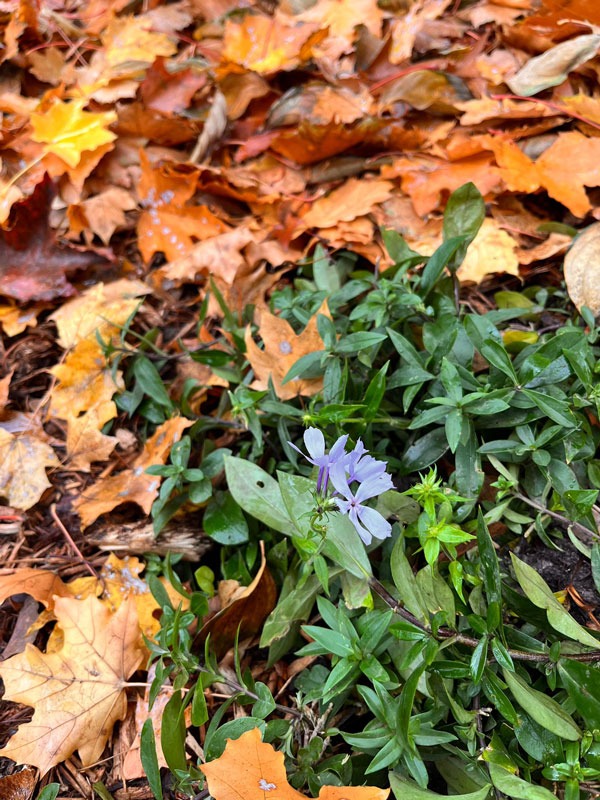
- Mourning cloak
- Swallowtails
- Promethea moths
- Many more
If leaves bother you, consider selecting a corner of the yard to pile them up out of sight, or try removing them from walking paths only. In the spring make sure to not remove the remaining leaves right away, you may be throwing away pupae! Again, wait until temperatures have been above 10°C for at least a week, even longer if you can.
Mulching
Mulching is the practice of covering bare and exposed soil with a layer of organic matter such as bark chips, shredded wood, straw or leaf litter. This helps to retain moisture in the soil, suppress germination of uninvited seeds, distribute irrigation more evenly and lessen soil erosion. Here are a few things to consider so that ground nesting bees and other pollinators have a chance to make your garden their home.
Given that ground-nesting bees need direct access to the soil to create and access their nests, the best time to apply mulch is after pollinators have emerged from their ground nests, and before hot temperatures arrive. Allow for 2-3 weeks of above 10°C temperatures before mulching, and remember to leave some bare ground. Also, if you mulch too late in the fall you may be covering new nests.
We recommend avoiding dyed mulch as it tends to contain harmful chemicals. There is an increasing trend for inorganic mulches such as gravel. While useful in some applications, keep in mind that these aggregates don’t feed your soil and can create warm micro-climates that some plants cannot tolerate. Instead we recommend organic and local resources such as aged natural cedar mulch, leaves, compost, ground cover plants, municipal tree waste, or organic straw. Keep in mind that some wood chips are not tested against pesticides, and that very fresh wood chips can pull nitrogen from your soil, so let them age first. You can find more information here.

Pesticides and Fertilizers
Pesticides are one of the biggest enemies of bees and other pollinators. Use of pesticides in massive monocultures is a major contributor to loss of habitat. Pollinators can be exposed to pesticides by direct contact with residue, ingestion of contaminated pollen or nectar, or exposure to contaminated nesting sites or material. Gardeners and homeowners have a great opportunity to make a positive impact and provide a safe environment for pollinators seeking refuge by eliminating the use of chemical pesticides and fertilizers.
Lawns
We have an entire blog post on lawn transformations, but if you have a lawn, know that you can maintain it in a way that provides a bit more than a pretty expanse of green. If having a tidy lawn is important, consider setting your mower blade higher, to 3 or 4”, and letting the clover and violets grow. If you’re open to a little more variety, plant low-growing plants along with your grass such as Self-Heal, Bird’s Foot Trefoil, Clover, and Scilla.
Learning new ways to incorporate pollinator-friendly maintenance into your routine will attract more bees, butterflies and birds to your garden and may even keep them there to stay.
“Urbanization has had a hand in the decline of bees, butterflies and other essential bugs. It’s time for cities, and citizens, to become forces for good. Through small, simple acts to better manage our yards and green spaces, we can help sustain the pollinators that sustain us.” — David Suzuki Foundation, 2019
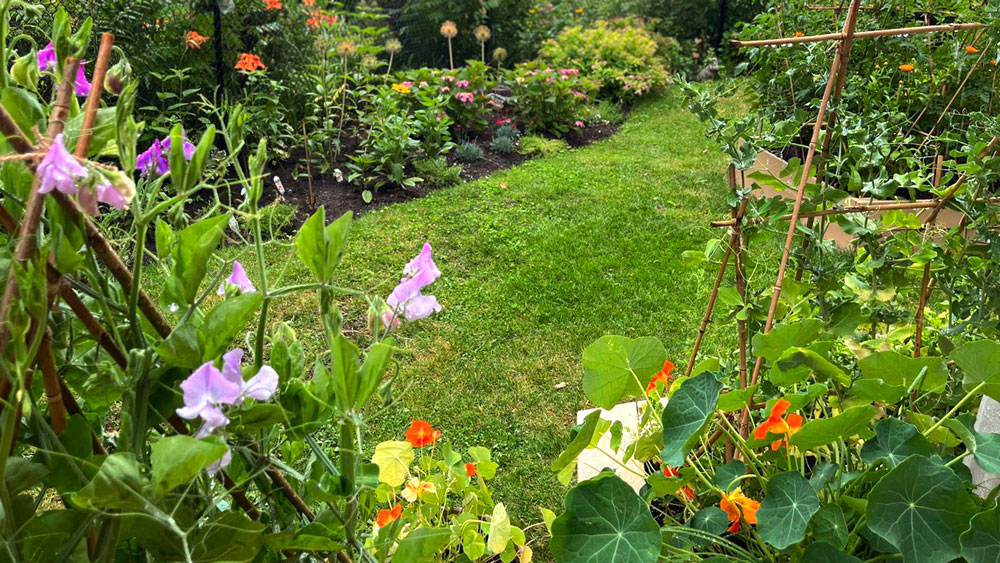
Resources
Folnović, T. (2021, November 22). Weeds as soil indicators. AGRIVI. From https://www.agrivi.com/blog/weeds-as-soil-indicators/
Johnson, L., & Colla, S. (2022). A Garden for the Rusty-Patched Bumblebee: Creating Habitat for Native Pollinators: Ontario and Great Lakes Edition. Douglas & McIntyre.
Smith, Maille. (2022, June 16). 10 best organic mulches for your yard. Lawn Love. From https://lawnlove.com/blog/best-organic-mulch/
Spotts Gardens. (2023, March 10). Shrubs to prune in spring for the best blooms. Spotts Garden Service. From https://spottsgardens.com/what-shrubs-to-prune-in-spring-blooms-midwest-organic-garden-yard-zone-6-indianapolis/
The Xeres Society (2011). Attracting Native Pollinators, Protecting North America’s Bees and Butterflies.